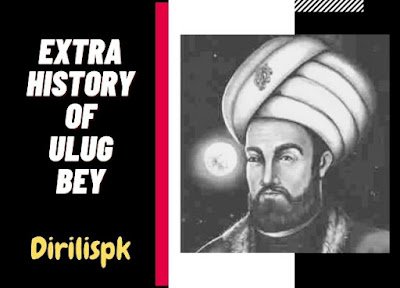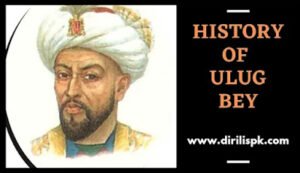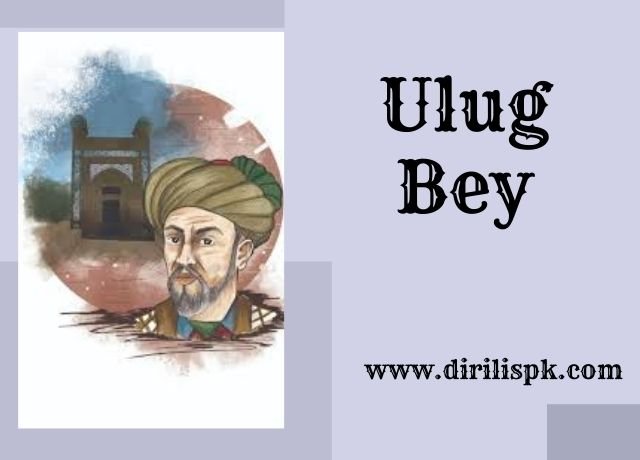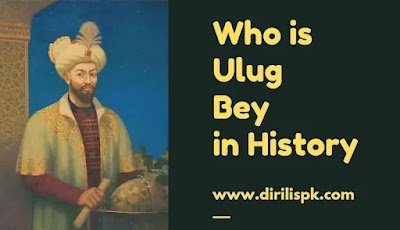Who is Ulug Bey? Where was Ulug Bey born? Who is Ulug Bey’s grandson? What did Ulug Bey do? What are Uluğ Bey’s contributions to science? From the sultans of the Timurid State; Uluğ Bey’s life. Uluğ Bey was the 4th sultan of the Timurid Empire and a Turkish mathematician and astronomer.
Ulug Bey’s Life :
Uluğ Bey was born on March 22, 1394 in the city of Sultaniye , Azerbaijan . His father is Emir Timur ‘s younger son Shahruh and his mother is Gevher Şad . The title of Uluğ Bey is the Turkish equivalent of “emîr-i kebîr” in Timurids.
Between 1394-1405, he studied traditional religious sciences at the palace, followed by logic, mathematics and astronomy. He was married by Emir Timur to Öge Begüm (Biki), daughter of Muhammed Sultan, in 1404. He gave his father Uluğ Bey the administration of the Transoxiana region based in Samarkand in 1409.
Uluğ Bey, who assumed the responsibility of governing the state when he was only sixteen, continued his rule as the emir of this vast geography for thirty-eight years, from the Ceyhun river in the northwest to Soğanak and the city of Asparay in the northeast. However, since he devoted most of his time to scientific activities, he carried out state affairs under his father’s support and with the help of him. Like other emirs, he used the name of Shahruh in sermons and coins.
During the Ulug Bey period, Samarkand became a center where the intellectual sciences, art and literature lived their brightest days. Although his degree of interest is unknown, Sufi culture and especially Naqshbandiism spread rapidly in this region during his time .

Ulug Bey’s Exemplary Story :
After the death of Shahruh in 1447, the throne struggles started. Uluğ Bey, upon the news of his father’s death, left Samarkand to his young son Abdulaziz and moved to Khorasan, but he could only capture Belh. In 1448, with the support of his eldest son Abdullatif, he entered the city of Herat and although he did not touch the city, he allowed the outer quarters to be looted by the soldiers on the grounds of cooperation with the enemy. Meanwhile, when he learned that Abulhayr Khan had attacked Samarkand and destroyed his palace, he left Abdullatif behind and left Herat. However, when Uluğ Bey came to power, he did not give Abdüllatif the share that was supposed to be given from the treasury, and because he entered Herat with the help of Abdüllatif, but registered it in the fetihnames as the help of his younger son Abdülaziz, a coldness and resentment arose between the father and his son.
Abdullatif, who took advantage of Uluğ Bey’s departure from Herat, prepared an army against his father and fought with him several times on the edge of Ceyhun, but was defeated. After this incident, Uluğ Bey, who learned that his son was following him while returning to Samarkand, marched on Abdüllatif again, but this time he was defeated and had to retreat. Meanwhile, Abu Said Mirza Khan, who grew up with him, attacked Samarkand. Abdullatif captured Tirmidhi and Keş and marched to Samarkand and in September-October 1449 he defeated Ulugh Bey in Damascus, the outer region of Samarkand.
Uluğ Bey wanted to return to the city, but his own commander did not let him in by having the castle gates closed. Finally, he had to surrender to Abdullatif. The court laid out under the administration of an individual named Abbas, who is of Iranian beginning and pro-Abd al-Latif, sentenced him and Abdulaziz to death for opposing sharia.
How Did Ulug Bey Die?
Uluğ Bey surrendered his right and guarantee to run and assented to live subject to his child and requested that Abdullatif for authorization go on journey. Although he left Samarkand upon the permission given, the commanders convinced Abdullatif that this was inconvenient and killed him on October 27, 1449, a day or two away from Samarkand. Two days later, Abdulaziz was killed as a result of another assassination.
The reign of Uluğ Bey, who was buried in Gûr-ı Emir in Samarkand, lasted two years and eight months. The main reasons why his life ended in a tragedy are that when his son Abdullatif appointed him as the governor of Belh despite his desire for Herat, when he became the ruler, they fell apart as the governor of Belh, unlike other rulers, he did not distribute the taxes collected from the people to his commanders and those around him, but for the benefit of the people and for scientific research, madrasah, library and observatory. spending on its construction. For this reason, the commanders provoked Abdullatif against his father and left Uluğ Bey and went to the opposite side. (Abdülmüteâl es-Saîdî, p. 339)
Uluğ Bey, besides being a mathematician, astronomer, writer and poet, was knowledgeable enough to read the Qur’an with seven recitations.

Schools Protected By Ulug Bey :
He invited the scholars of religion, science, art and literature, who were successful in every field of his period, and gave them abundant blessings, and he benefited greatly from them. Kadızâde-i Rûmî, Cemşîd el-Kâşî and Ali Kuşçu are the most famous of them. Among Uluğ Bey’s court poets, İsmet-i Buhari and Sekkaki , the first important poet of Çağatay poetry , had a special place. Sekkaki, in the ode he wrote for Uluğ Bey,
He adulated both him and himself by saying, “Regardless of how frequently Felek returns, there will be neither a scholarly ruler like you nor a Turkish writer like me.
What Did Ulug Bey Do?
In addition to his outstanding achievements in mathematics and astronomy, some of the unique works left by Uluğ Bey in architecture have reached our time. Between 1417-1420, he had two madrasahs built, one in Bukhara and the other in Samarkand, and supported them with large foundations. He also had a hankah, a hamam and two palaces built in large gardens in the Registan of Samarkand.
Samarkand Madrasa :
As it is understood from the letter of Gıyâseddin el-Kâşî about the scientific activities in the Samarkand Madrasa, a special value was given to the religious sciences in this madrasa, where the most famous scholars of his time taught courses in every field. It is known that Uluğ Bey also attended these lectures and gave lectures from time to time. (Sayılı, Uluğ Bey, pp. 78-79) This madrasa, which continued its activities during the Uluğ Bey period, gradually lost its importance after his death. (see Uluğ Bey Madrasa) In the field of architecture, Uluğ Bey repaired the structures in the Shah Zinde Cemetery , where his grandfather Timur also cared for and where the tomb of the Companions was located, had a portal (dervâze) built for Gûr-ı Emir and added new galleries.
Uluğ Bey, who had a superior intelligence, was a successful mathematician and astronomer . He saw the Merâga Observatory at a young age and reserved a place for it in his mind. For this reason, he established the largest observatory after Merâga in Samarkand. This structure was built under the supervision of Kadızâde-i Rûmî and Cemşîd el-Kâşî . However, these two scholars died before the observatory was completed, and Ali Kuşçu was appointed in their place.

Ulug Bey Zici :
The observatory, which continued its activities for thirty years until Uluğ Bey’s death, and the astronomical tables created here were influential in the world of science until the invention of the telescope. (see Samarkand Observatory) Uluğ Bey created Zîc- i Uluğ Bey, which is considered a source work both in the Islamic world and in Europe, in order to eliminate some measurement errors and deficiencies in the Zîc-i İlhânî he used . It is also known that he created tangent and sine rulers by doing research in the field of geometry and especially on triangles.
Târîḫ-i Ulus-i Erbaʿa, whose attribution to Uluğ Bey is doubtful, was written in Persian, but not all of it has survived to the present day. This work, which is claimed to have been written by one of the historians around the ruler, was about the states of China and Mongolia, the Golden Horde State (Cuciler), Iran and the Chagatai Turks in Central Asia, which were established after the disintegration of the Mongol Empire. (Göker, pp. 120-121)
